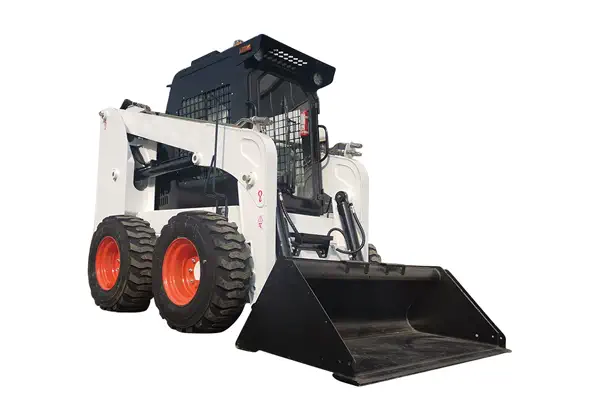
Skid steer loader
Know More About Skid steer loader
Skid Steer Loader, also known as “small loader”, is a multi-functional construction machinery widely used in municipal engineering, small construction and agricultural fields. Preferred for its flexibility, adaptability and versatility, it has become an indispensable tool for these industries.
- Versatility: The Skid Steer Loader has a variety of work functions, such as loading, digging, scraping, grading and spreading. This makes it an all-round construction machine suitable for a variety of different tasks.
- Applicability: Whether it is in municipal projects, construction sites or farmland, Skid Steer Loader can easily handle it. Its compact size and flexible maneuverability allow it to work in tight spaces while providing the power to handle a variety of different materials and tasks.
- Municipal Engineering: Skid Steer Loader plays a key role in the construction and maintenance of urban infrastructure. It can be used for garbage removal, snow shoveling, pipe digging, road repair and other municipal engineering tasks, reducing manual labor and improving efficiency.
- Small construction: On small construction sites, the Skid Steer Loader is indispensable. It can be used to dig and carry construction materials, dig foundations, level the ground, and perform other construction tasks, reducing manual labor and saving time.
- Agriculture: Farmers also benefit from the Skid Steer Loader's versatility. It can be used to clear fields, dig trenches, move produce, and perform other agricultural tasks. Agricultural attachments can also increase its suitability, such as turf rollers, spreaders and collectors.
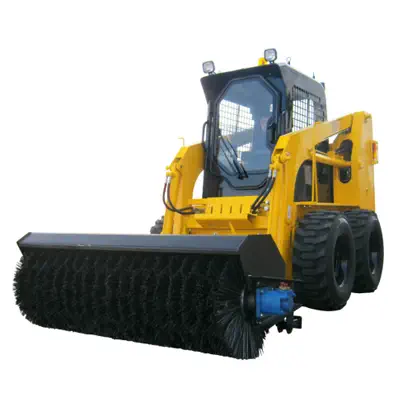




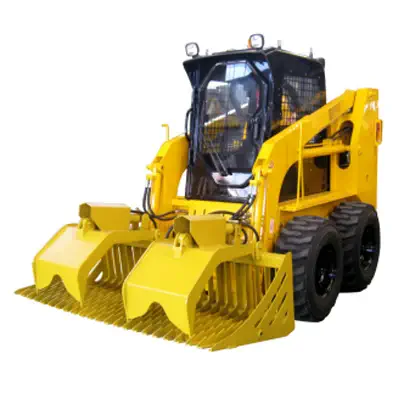


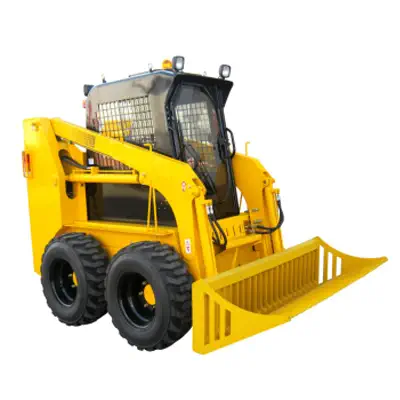

Technical specs comparison of Skid steer loader
| Specification | Unit | EL30 | EL40 | EL45 | EL60 | EL65 | EL100 | EL120 |
| Rated load | kg | 300 | 500 | 700 | 859 | 1050 | 1100 | 1200 |
| Bucket capacity | m³ | 0.2 | 0.3 | 0.4 | 0.4 | 0.5 | 0.55 | 0.55 |
| Operating weight | kg | 1500 | 2300 | 2700 | 2800 | 3500 | 3550 | 3600 |
| Tire(track) model | / | 5.7-12 | 8.5-15 | 10-16.5 | 12-16.5 | 12-16.5 | 12-16.5 | 12-16.5 |
| Engine | / | Yanmar | Xinchai | Xinchai | Xinchai | Xinchai | Weichai | Weichai |
| Engine power | hp | 18.4 | 37 | 37 | 45 | 55 | 74 | 103 |
| Max. drive speed | km/h | 9 | 10 | 12 | 12 | 12 | 9-18 | 9-18 |
| Hydraulic pump flow | L/min | 50 | 60 | 62.5 | 75 | 75 | 75 | 75 |
| Fuel tank capacity | L | 25 | 60 | 70 | 80 | 75 | 90 | 90 |
Skid steer loader application area

Construction
- Excavation: Skid steers are equipped with various attachments like buckets and backhoes for digging and excavating tasks.
- Material Handling: They are used for moving and transporting construction materials, such as gravel, sand, and concrete blocks.
- Demolition: Skid steer loaders are used in demolition projects to remove debris and clear the site.
- Grading: With attachments like grader blades, they can level and grade surfaces.
- Paving: Skid steers can assist in asphalt and concrete paving by transporting and spreading materials.
Landscaping
- Land Clearing: Skid steers are used to clear land of trees, shrubs, and rocks.
- Soil Preparation: They help in preparing the ground for landscaping and planting.
- Lawn Care: With specialized attachments, skid steer loaders can be used for mowing, mulching, and lawn renovation.
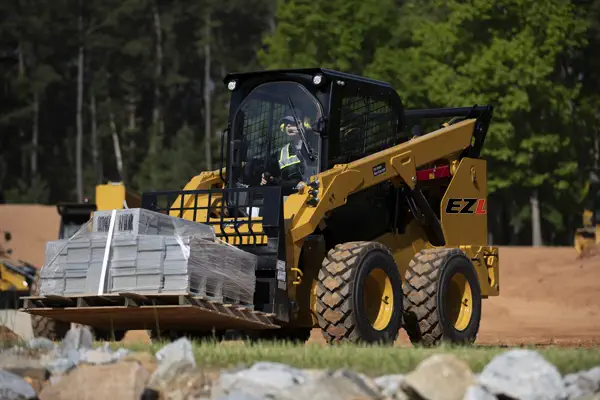

Agriculture
- Crop and Hay Handling: Skid steer loaders assist in handling and transporting crops, hay, and other agricultural materials.
- Livestock Care: They are used for cleaning livestock pens and feeding animals.
- Fence Building: Skid steers help dig holes for fence posts and install fencing materials.
- Snow Removal: In colder climates, skid steers equipped with snow blowers or plows clear driveways and roads.
Material Handling
- Warehousing: Skid steers are used for moving pallets and materials in warehouses and distribution centers.
- Recycling: They are employed in recycling facilities for sorting and moving recyclables.
- Container Handling: At shipping ports, skid steers help load and unload containers from trucks and ships.


Utilities and Municipal Work
- Street Sweeping: Skid steers equipped with broom attachments are used for street cleaning and maintenance.
- Snow Clearing: In areas with heavy snowfall, skid steer loaders help clear roads and parking lots.
- Utility Installation: They assist in digging trenches for utility lines, such as water and gas pipelines.
Skid Steer Loader Purchase Guide
- Identify Your Needs: Determine the primary tasks your skid steer loader will be used for, whether it's construction, landscaping, agriculture, or other applications. Knowing your specific needs will help you choose the right machine and attachments
- Operating Capacity: Consider the weight and volume of materials you'll be handling. Skid steer loaders are categorized by their rated operating capacity, which varies from small models (under 1,500 lbs) to larger ones (over 3,000 lbs). Choose a model that can handle your typical loads.
- Attachments: Skid steer loaders are highly versatile due to their ability to accept various attachments. Research and select the attachments you'll need for your tasks, such as buckets, forks, grapples, augers, and more. Ensure the machine is compatible with these attachments.
- Size and Maneuverability: Skid steer loaders come in various sizes. Consider the physical dimensions and turning radius, especially if you'll be working in tight or confined spaces. Smaller models offer better maneuverability, but larger ones provide higher capacity.
- Engine Power: The power of the skid steer loader's engine affects its performance. Choose an engine size that matches your workload requirements while considering fuel efficiency.
- Tire Type: Skid steer loaders have two main types of tires: pneumatic and solid (or foam-filled). Pneumatic tires provide a smoother ride but can puncture, while solid tires are puncture-resistant but may offer a rougher ride. Choose the type that suits your terrain.
- Hydraulic Flow and Pressure: The hydraulic system is essential for operating attachments. Ensure the machine has sufficient hydraulic flow and pressure to power the attachments you plan to use effectively.
- Cab Comfort and Safety: Operator comfort and safety are important. Look for features like ergonomic controls, adjustable seats, climate control, and good visibility from the cab. Ensure the machine meets safety standards and has safety features like ROPS (Roll Over Protective Structure) and FOPS (Falling Object Protective Structure).
- Maintenance and Service: Consider the ease of maintenance. Look for skid steer loaders with easily accessible maintenance points and those from manufacturers with a strong dealer network for servicing and parts availability.
- Brand and Warranty: Research reputable brands known for producing reliable skid steer loaders. Check the warranty offered, and understand what it covers.
- New vs. Used: Decide whether you want to purchase a new or used skid steer loader. Used machines can be cost-effective but may come with more wear and tear.
- Environmental Compliance: If environmental regulations are a concern in your area, consider emissions standards and engine technologies to ensure compliance.
If you have questions when purchasing a skid steer loader or would like to learn more about the performance of our skid steer loader equipment,
please click the button below to contact us.
FAQ About Skid steer loader
Skid Steer Loaders are operated by manipulating the left and right wheels or tracks independently. By varying the speed and direction of these wheels, the machine can turn in tight spaces and perform precise movements.
Skid Steer Loaders can be equipped with various attachments, including buckets, forks, grapples, augers, and more. These attachments allow them to perform a wide range of tasks.
Skid Steer Loaders offer benefits such as compact size for maneuverability, versatility in handling multiple tasks, and the ability to work in confined spaces. They are also known for their ease of operation.
Regular maintenance includes checking fluid levels, inspecting hydraulic systems, cleaning and greasing moving parts, and replacing worn-out components. Consult your machine’s manual for specific maintenance schedules.
Yes, Skid Steer Loaders can work on rough terrain when equipped with the appropriate tires or tracks. They are designed to handle various ground conditions.
Operators should receive proper training, wear safety gear, use seat belts, and be aware of blind spots. Follow all safety guidelines provided in the equipment manual.
The lifespan of a skid steer loader can vary depending on factors such as maintenance, usage, and the quality of the machine. On average, a well-maintained skid steer loader can last anywhere from 5,000 to 10,000 hours of operation. With proper care and timely maintenance, some models can exceed these hours.
Yes, skid steer loaders can be transported on trailers or trucks. However, it’s essential to ensure that the transportation equipment is properly rated for the skid steer’s weight and dimensions. Always secure the loader with appropriate restraints to prevent movement during transport.
Have Anything To Ask Us?
Please fill in your email in the form and we’ll get back to assist you soon!
- Will contact you within 1 hour.
- Don't worry, we hate spam too!
